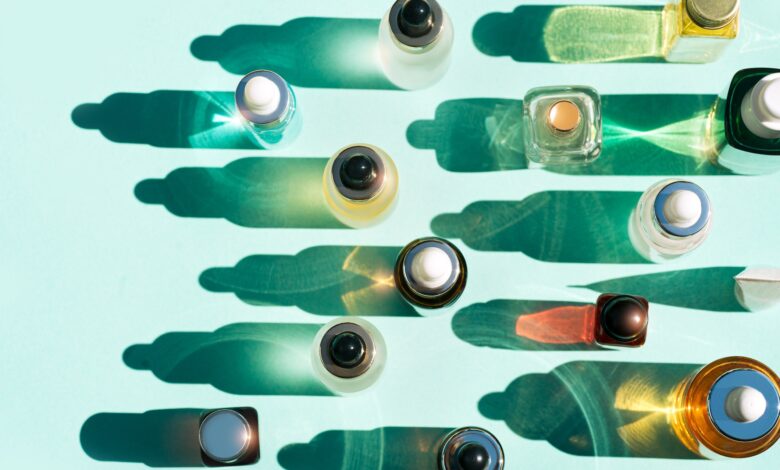The Empty Promises of ‘Medical-Grade’ Skin Care

We’re just gonna say it up front: Buying “medical-grade” skin care could be a huge waste of money. And it’s not your fault if you didn’t know this—I’ve been reporting on every nook and cranny of the skin care space for more than a decade, and it honestly never occurred to me that this label might be BS.
The term “medical-grade,” which I’ve always loosely understood to apply to super-sciencey, highly concentrated, or doctor-formulated products can mean anything—or nothing at all. “It is not backed by any sort of body of authority [like the Food and Drug Administration or Federal Trade Commission] where there are regulations as to what it means, so it’s purely a marketing term,” Shereene Idriss, MD, clinical instructor in dermatology at the Icahn School of Medicine at Mount Sinai and founder of Idriss Dermatology in New York City, tells SELF.
Since the label has no rules around it, it can be slapped on any product, by any brand, just because. Worse, “medical-grade” cleansers, serums, and moisturizers are usually a lot more expensive than their run-of-the-mill counterparts, and you’re not guaranteed a higher-quality formula. Here’s what I found out when I tried to fact-check this murky claim.
First, let’s talk about the skin care products that are regulated.
Legally, most personal care products in the US fall under two categories: cosmetics and drugs, Michelle Wong, PhD, a cosmetic scientist based in Sydney, tells SELF. Ingredients like benzoyl peroxide, salicylic acid, titanium and zinc oxide (in sunscreen), and tretinoin, for example, are all regulated by the FDA as “drugs”—which means companies that make products containing these ingredients have to stick to a standard known as Current Good Manufacturing Practices (they’re bound to report adverse reactions to the FDA and must register all manufacturing facilities, among other requirements).
A skin care product that’s legally classified as a drug will also have an “active ingredient” listed on its packaging, along with a concentration percentage and an expiration date. Some of these ingredients are available in OTC formulas, while others—as well as higher concentrations of “drugs” that would otherwise be available OTC—are prescription only, Dr. Wong says. Makers of OTC products don’t just follow this template for the heck of it—they need to stick to the FDA’s preapproved rules for “drugs” in order for their products to be considered Generally Recognized as Safe and Effective (GRASE).
The FDA recently made significant strides to regulate the “cosmetics” category (which includes skin care, makeup, hair care, and other grooming products) with the passage of The Modernization of Cosmetics Regulation Act of 2022, but the new rules primarily aim to address the safety of manufacturing facilities and their products, allergen labeling requirements, and standardized testing criteria for identifying harmful substances like asbestos in certain formulations.
Unfortunately, the FDA doesn’t police any advertising claims for said cosmetics. So “medical-grade” falls into the Wild West territory of unregulated labels such as “clean,” “natural,” and “dermatologist-tested” (since this last term is also uncontrolled by a government agency, there’s no way to know how many derms tested a product and what that test was, exactly), Dr. Idriss says.
So why does “medical-grade” deserve to be put on blast more than other unchecked claims? It aims to lure in consumers with a bit more unearned credibility, according to the experts we spoke with. “There’s this sort of prestige factor associated with [“medical-grade” skin care products], but it doesn’t mean that they’re naturally better or superior to products that you could buy at Sephora or Ulta or CVS,” Dr. Idriss says.
Dr. Wong agrees: “It makes products sound like they are somehow legally in a different category and that they’re superior, when that’s not the case,” she says. “There’s this idea that there’s a lot more research behind them and that they’re well-tested. In reality, it’s pretty much a crapshoot.”
Rather than relying on “medical-grade” claims, look for evidence of legit research.
Lack of regulation aside, you don’t necessarily need to avoid including “medical-grade” skin care in your routine—not all of the brands that promote their products this way are “complete bullshit,” as Dr. Idriss puts it. She often recommends formulas from brands like MBR Skincare and Environ, for example, which are positioned as “medical” quality, and I’d be hard-pressed to think of a dermatologist who hasn’t recommended Skinceuticals CE Ferulic as a top-tier antioxidant serum (despite being super stinky). Instead of relying on tricky marketing terms, she explains, your best bet is to do your homework on the science behind a particularly pricey product, whether it claims to be “medical-grade” or not.
A lot of brands actually do put a ton of research into their formulations, invest in clinical trials, and even go the extra mile and get these results published in peer-reviewed journals, meaning independent experts have signed off on their legitimacy. And, thanks to the ease of sharing information online, companies can add the results of their research to their websites.
“Look for clinical studies performed on the product,” Michael Cameron, MD, FAAD, assistant clinical professor in the department of dermatology at Mount Sinai and founder of Cameron Dermatology in New York City, tells SELF. “Brands often fund these studies, but they’re acceptable as long as there is a placebo group or a comparator group [that tested a similar product], and there’s an unbiased third party involved in conducting the study and assessing the product’s efficacy.” (The company will often specify “third-party” testing if that’s the case—like here and here.)
Another sign of a legit study: It was “double-blind,” meaning that neither the participants nor the researchers knew which product was being tested until the trial was over. (This double-blind research on a 2% salicylic acid cleanser funded by Johnson & Johnson is a good example, as is this Neutrogena study on a 0.1% retinol cream.) If a company has this information on its site, it will often be listed under a dedicated section (titled something like “the science” or “clinical studies”) or on an individual product’s page.
In addition to looking into studies on specific products, you can also do some digging into the evidence supporting certain active ingredients. (That happens to be one of our areas of expertise, so we’re happy to help you learn about the research on vitamin C, retinoids like tretinoin, glycolic acid, and niacinamide, among lots of other skin care ingredients.)
For truly medical-grade results, seek out a medical professional.
While doing a little research of your own may help point you toward better-quality products than you’d find by depending on marketing claims alone, the best way to create an effective skin care routine is to see a dermatologist who can offer personalized advice, Dr. Cameron says, especially if you’re dealing with a medical issue like acne, skin rashes, itchy or painful bumps, the list goes on. We know—it’s easy for us to say, and not always simple to do, since dermatologist visits can be pricey and not always covered by insurance (if you have insurance). Another complication: There’s a shortage of providers, Dr. Idriss adds.
While that may make it tougher for you to see a dermatologist where and when you want, there are ways to find one you love, and we can confidently say it’s the most reliable way to get skin care advice so good that it’s–dare we say–medical-grade.
Related:



